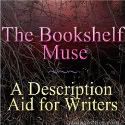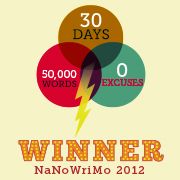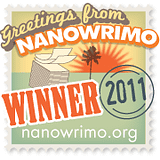There are things that move just beyond our vision. Words that drift past our ears. Soft. Unintelligible. Teasing. A scent of a flower when standing in an empty windowless room – the sound of running water in a thirsty desert – an apparition that always moves one step faster than it’s pursuer, ever evading the grasping hand. There are beings and creatures, benevolent and malevolent since long before the time of men with aspirations that surpass the wildest of mortal dreams. And they all live among us, in the blind spot of our eyes. Waiting. Watching. They are the Faerie, and soon, they will come home. (Quote: Gene Lempp)
Otherworld
Throughout history, almost every culture had some form of belief in realms existing beyond the sight and understanding of mortal humans. These beliefs tend to divide into:
- Beings that were “beyond human” (the faeries, mythical beasts and immortals in all forms) and…
- The Dead.
In ancient times, cultures often blended these two concepts together. The banshee, for instance could be a living creature able to predict the deaths of great personages, yet, is often viewed as a ghostly figure in appearance.
Digging back to the roots of Indo-European religion and beliefs (which is where much of Western pre-Christian religious belief stems from), most Otherworld stories speak of the need to cross a river, ferried in a boat by an old man, in order to enter the magical Faerie dimension. If this sounds a lot like the stories of Charos and the crossing of the River Styx, you’re right on target. Like all things, human beliefs, myths, religions and conceptualizations evolve from generation to generation taking on whatever form is required by the times.
Travel between the realms, or layers of reality, was typically along an axis, such as a river, a rope, or in many ancient cases, along the trunk of a great tree that stretched across all dimensions. If you’d like more on this concept check out last weeks post on the World Tree.
Beyond the shared beliefs, each culture had unique methods of crossing back and forth between the Faerie and Physical realms. Some entered through splits in a cliff face, such as leads to the Dead Men of Dunharrow in the Lord of the Rings.
Others came there through a sudden gathering mist that transported those caught within it to the magical realm (remember when I used to have the “misty portal” *wink*). Folk tales spoke of reaching the Fae Realm by entering faerie rings during a full moon, stepping into the shadow of an old oak or after nestling inside the hollow of a willow tree.
The Faerie Realm, were it to be combined from the varying myths and legends, would hold the fabled lands of Avalon, Tir na nog, Mag Mell, Elfland, Olympus, Yggdrasil, Elysium, Rivendell, the Isles of Earthsea, the warrens of gnomes and dwarves, the pocket dimensions of ethereal beings more powerful than mankind and perhaps older than the universe itself. And – that is just scratching the surface. All of the legendary lands combined in one place would require a solar-system-sized Earth.
If you come to a fictional realm and it is not solely a habitation of the dead or mankind, then, you are in the Faerie Realm. Take a picture (smile).
What lives in the Faerie Realm? Glad you asked.
- Faeries, some with butterfly or insect wings, others with no wings.
- Some are tall and slender, like Tolkein’s elves and others are squat trolls or dwarves of mischievous intent.
- Some cannot be described in normal terms (consider Lovecraft’s Cthulu creations).
- The oldest beliefs felt that the creatures where ethereal (made of mist and smoke).
However, I think that more than just Tinkerbell and Arwan lives there.
King Arthur, the pantheons of gods from Norse, Greek, Slavic and most other traditions found a home in the land of youth and summer. As did dragons, unicorns, brownies (not the type that come by to sell you cookies or that you bake yourself), griffins and any generally living creature or deity of myth, fable and legend.
Imagine for a moment that all the above existed in a single place. An amalgam of human mythological understanding merged into a single mega-realm. Now you have an interesting playground and a powerful concept. Enjoy.
While such a place may seem to be a writer’s delight, I must warn you that attempting to travel there yourself is a dangerous proposition. Many have not returned and those that do often find that centuries have passed, leaving them alone in a world they no longer understand.
And in this statement is my one true caution:
One visits the Faerie Realm, One does not Live There
– know when you’ve researched or world built enough or you may find hundreds of years and the chance to write the incredible story you went looking for have passed.
One such tale speaks of King Herla who traveled to the wedding of a dwarf by passing through a split in a cliff. After three days of celebration the dwarf gave Herla a small dog and bid him return to his own land, but not to dismount until the dog jumped from his lap to the ground. Herla returned, only to discover that three centuries had passed and the people he had once led (the Britons) were now a conquered people living as slaves under Saxon rule. Distraught by this news some of his men dismounted, only to have their bodies rapidly age and turn to dust. Herla and his remaining companions still ride the night, eternally waiting for one small dog to jump down.
Even those that have returned without being tricked like Herla find themselves deeply changed and no longer comfortable or content in the mortal world. While I know that writers often fit this description, be wary of the path you choose to the Faerie Realm, always sticking to those the faeries do not use themselves (one of many actual myths).
Join me next week when we take a look at the Realm of the Dead – I considered having them today but was warned in a vision not to disturb the dead on Halloween (smiles).
How many of your creations now live in the Faerie World? What is the best example you can think of from history, literature, or entertainment that include an “Otherworld”? Feel free to include your own work, if you choose. I’d love to chat with you.
Peaceful Journeys.















I don’t normally use the Faerie World in fiction. It’s just not a concept I really play with, but I do see some similarities between the Faerie myths and some more modern science fiction. In a lot of ways the TV series Sliders and Star Gate SG-1 both play with the concept of the ‘otherworld’. Sure one is dimensions, and another alien planets, but a lot of the same themes from the fae myths pop up time and again.
I love the analogy of writer’s world being like the faeryworld and seeing the world differently after a visit. Cool information about how you can move between the worlds. I didn’t know that you could transfer by stepping into the shadow of an old oak. Wouldn’t it be a surprise….
A friend of mine and I used to write together on a collaborative fiction mailing list, and her part-Fae character and my very normal one (well, she’s from Indiana) got married. They have long since divorced, but there are the kids; they spend a month every summer with their father in a different dimension (kind of a Faery world). Recently, the one kid that got none of her Dad’s attributes (including the pointy ears and the magical ability) went there and was sent home after one day… anyway, even though the world isn’t mine, I found myself having to visit. When it’s not your world, you don’t know the rules, and you aren’t accustomed to writing fantasy, it can be a challenge.
Pingback: Lessons for the Aether: National Novel Writing Month « Neither Here nor There….
The beautiful images you chose for this piece remind me of the fairy tales my mother used to make up for me. The Faerie Realm fascinates me because it frightens me and intrigues me at the same time. Venturing into the unknown is an uncomfortable place, whether real or imaginary. Yet it’s often magical and I feel a need to learn more about it. I especially like the story about King Herla. (Scary yet intriguing) Right now I have no plan to ever write in this vein but we just never know where this path (writing) can take us. Excellent post, Gene! 🙂
Patrick: Exactly, we can repackage myth, legend and fable as we choose. This is something that our predecessors did all the time. If one follows the evolution of even the smallest fable they will find that it usually was based on a string of earlier stories – like drafts, that change from generation to generation. Even if one doesn’t use fantasy directly, there are still many chances to adapt it to whatever project one is working on. Thanks 🙂
Reetta: Indeed it would be a surprise – but then who has ever understood the power of a simple shadow to warp a vision of reality? Thanks 🙂
John: Sounds interesting. I think as writers, we should always be challenging ourselves to think in new ways about old things. Thanks 🙂
Marcia: Curiosity and Fear are a wonderful mix, are they not? Remove the “magic” from a fable and you have stories of people trying to survive the dangers of life. Strip away myth and you’ll find the reason that it was created. Strip away superhuman attributions, skills and paraphernalia and the “actual” legend comes into clarity. Those parts (the human stories) can be used in any genre and hold a magical quality that endures the ages. All fiction writers live in a type of Faerie Realm – we just don’t all see the same faeries. Thanks, Marcia 🙂
I love the universality of many of the old faerie tales. You’re right that much of them were intended to display the dangers of life, and warn of the prevalent dangers of those times gone by. Don’t mess with or speak ill of the dead; be nice to travelers; be grateful for what you have; be generous with what you have. All of them end up, like most of the world’s religious texts, being how-to guides for getting along best with other people; don’t make the same mistakes they did and you won’t end up the way they did.
My favorite faerie construction? Spiderwick. I’ve always thought that the tools for interacting with the faerie population were especially authentic and true to the work.
Thanks for the trip into faerie, Gene. I should be getting back now.
I wrote a poem about a carousel that hints that a carousel and the carousel horses are not of this world.
I’m so loving your new Designing from Bones series, Gene. When I read this part, “evolve from generation to generation taking on whatever form is required by the times,” I thought of portals and worm holes, alternate universes, and time travel that our generation seems drawn to. Once again, I love your quote. You’re ultra talented!
Mythology, fantasy, and a whole lot of imagination – welcome to my world 🙂
As for the favorite examples – Lord of the Rings, Princess Bride, and Harry Potter. There are plenty of fantasy creatures, spells, and magical happenings in those stories. When I read them, I feel as if I stepped into another Realm.
John H: Proverbs wrapped in fiction. Aesop (whomever he was) set the standard, most likely working from the campfire stories of older peoples, for taking life lessons and warnings and carefully blending their truths into fictional works. What is more powerful, saying “Don’t speak ill of the dead” or telling a tale of someone that does and the horrors that are visited on them as a result. I haven’t read Spiderwick but one of girls did and raved about it. Thanks for the TBR suggestion 🙂
Debra: Ah the fanciful carousel – very nice. Which makes me wonder where one that rides it will journey to?
Lynn: Exactly! When looking at fables, myths, legends and the like don’t allow yourself to feel that all the elements given are locked in stone. Treat them as pliable clay and remold them so that they speak to the world you live in. Thanks, Lynn 🙂
Angela: Princess Bride is my all time, #1, movie – absolute brilliance in writing. I’d also add a few more obscure ones: Labyrinth (with David Bowie as the Goblin King); Legend (a young Tom Cruise as a fantasy hero against Tim Curry as the devil); and Pandormum (what if the only way to get to the Garden of Eden was through the Gates of Hell and Insanity). Thanks for the comment 🙂
Pingback: Mind Sieve 11/5/12 « Gloria Oliver
Pingback: Designing from Bones ~ Underworld | Gene Lempp ~ Writer